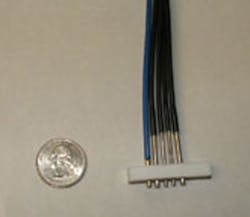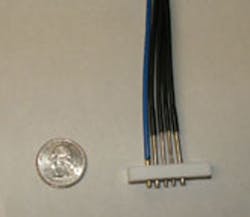SPECTROSCOPY/LASER-TISSUE INTERACTION: NIR spectroscopy device promising for diabetic wound healing
A new device, based on diffuse near-infrared (NIR) spectroscopy, promises to change chronic wound management. Currently, there are no established methods for early detection of wound healing, or for precise identification of healing progress. But researchers at Drexel University have created a prototype that measures the level of oxygenated and deoxygenated hemoglobin near a wound and compares it to a control/non-wound site of the same patient. Based on study results, the time course of oxygenated hemoglobin change was found to be a strong indicator of wound healing.
Diffuse NIR spectroscopy allows tissue to be non-invasively analyzed by measuring its optical absorption and scattering coefficients. A "diagnostic window" exists at NIR wavelengths (650-900 nm), allowing determination of tissue optical properties at significant depths, because light is able to penetrate several centimeters into tissue due to low absorption of hemoglobin. The absorption spectra of oxy-hemoglobin and deoxy-hemoglobin are distinct at NIR wavelengths, and with proper instrumentation, the absolute concentrations of each can be determined.Drexel University researchers have created a prototype device using near-infrared spectroscopy that measures the level of oxygenated and deoxygenated hemoglobin near a wound and compares it to a control/non-wound site of the same patient. (Image courtesy Drexel University.)
The device prototype has been developed and tested over the course of several years. It is controlled by software from a laptop computer and can move from patient to patient in a busy clinical setting. Measurements can be taken at any spot within or around the wound and take seconds to complete. Results are displayed on the computer screen almost instantly following the measurement. Improved prototypes are being designed, and in its final stages, the device will become more portable.
The research team included Elisabeth S. Papazoglou, Ph.D., and Leonid Zubkov, Sc.D., of Drexel University's School of Biomedical Engineering, Science and Health Systems, and Michael S. Weingarten, M.D., MBA, FACS of the Drexel University College of Medicine.
More Brand Name Current Issue Articles
More Brand Name Archives Issue Articles

